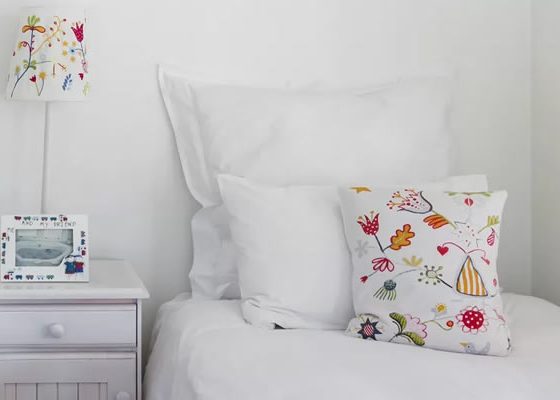Learning how to sell antique furniture is simple when you follow a few standard tips. Whether you decide to sell antique furniture locally or online, you’ll need to do some research and heavy lifting.
Step 1: Identify the Antique Furniture Piece
Before you can sell any piece, you need to learn to identify antique furniture. Depending on the type of furniture you have, you may need to do extensive antique furniture research. Appraisers will want some basic details about your piece and buyers will certainly want to know exactly what they’re purchasing. Try to find any identifying furniture marks and have a basic understand of what your furniture piece is before selling it.
Step 2: Take Great Photos of Your Furniture
Make a mini photo shoot with your furniture piece so you are prepared to show online experts, appraisers, or buyers exactly what your product is. You don’t need a fancy camera, but it helps to understand some photography tips to ensure your piece looks great in photos.
- Stage a photo shoot area in your house where there is a lot of natural light.
- Make sure the area around the piece is clear of any other items so the piece is the focus.
- Use a tripod to take pictures of the full piece.
- Take photos from every angle, including the front, back, sides, top, and bottom if they show important features.
- Take close-up pictures of hardware, fabric patterns, and all identifying furniture marks.
- Photograph any damage to the piece so buyers will know you’re an honest seller.
- Examine your photos on the computer as large as possible to ensure they show the actual color and details of the piece.
- Save only the best photos of each element and delete the rest so you don’t get them mixed up.
- Save all the best images in a folder on your computer labeled with the name of the piece, like “1800s Victorian Secretary Desk.”
- Rename each photo with a description of the shot, like “Victorian Secretary Left Side.”
Step 3: Create a File for Your Furniture
Take all the information you gathered in the identifying phase and compile it into a file folder. You can create a physical file with printed materials or a virtual file on your computer. Add to the file as you get further in the process. Information you could put in the file includes:
- Photos of your piece
- Photos from similar pieces you found in your research
- All notes from your identification and research phase
- Historical documents related to your piece
- A brief, written account of how you acquired the piece
- Any repairs or updates you made to the piece or know were made to it
Step 4: Find the Value of Your Furniture Piece
You can use antique furniture value lookup tools, antique price guides, or browse sold listings online from auctions or sites such as eBay to come up with your own valuation of the furniture piece. However, getting a professional antique furniture appraisal can help you get the best price for your antique.
- Look for an appraiser who specializes in antique furniture, your specific type of furniture, or the manufacturer of your furniture piece for the best results.
- You can find many websites and experts who do free online appraisals using your notes and images.
- Local antique shops, auction houses, and antique shows sometimes offer free verbal appraisals.
- An official appraisal can cost hundreds or thousands of dollars, but it results in a formal, written appraisal while free appraisals usually don’t.
- You can search the International Society of Appraisers or the American Society of Appraisers website to find an expert appraiser.
- Compare several valuations of your piece to come up with a reasonable sales price.
Step 5: Store Your Furniture in a Safe Place
While you are researching your piece and waiting for a buyer, you need to store your furniture in a safe place so it stays in the condition your listing it as.
- The furniture material will dictate which places are safe, but you are generally looking for a climate-controlled area where the piece has space to sit without touching anything else.
- Humidity and antique furniture don’t mix well, so avoid moist environments like unfinished basements.
- Extreme temperatures and temperature fluctuations can also destroy furniture, so hot attics aren’t ideal.
- Dust the furniture with a dry cloth before storing it.
- Use old blankets, sheets, or a large plastic sheet loosely draped over the furniture to cover the item and keep it clean.
- Keep the piece off the floor when possible and far enough away from the walls that it’s not touching them.
- Choose a location that’s easy to access and move the piece into or out of to minimize opportunities for damage.
- Store it in the position it’s meant to be set in.
- When storing multiple items, try to keep them from touching each other.
Step 6: Look for Local Places to Sell Antique Furniture
If you want to get paid for your antiques in cash, selling locally is your best option. Each comes with benefits and drawbacks, and you may be limited by the type of area you live in, but it’s cheaper to have local delivery or pickup. Local places where you could sell your antique furniture are:
- Antique fair
- Antiques mall
- Antique store
- Consignment store
- Flea market
- Local Craigslist marketplace
- Local Facebook Marketplace
- Local antiques dealer
- Local auction house
- Local newspaper ad
- Pawn shop
- Yard Sale
Step 7: Look for Places to Sell Your Furniture Online
Serious buyers and pieces that fetch higher prices can be sold online. Look for online selling options that focus on the type of piece you have. Places to sell online include:
- 1stdibs: This global seller’s marketplace specializes in furniture, fine art, and jewelry.
- Bonanza: This is a seller’s marketplace and webstore specializing in unique items.
- eBay: This popular marketplace sells everything on the planet, but has a large antiques section.
- Etsy: You open your own shop on Etsy to sell niche items, like antiques.
- Ruby Lane: This is a vintage marketplace that features antiques and vintage items.
- Sotheby’s: This antique furniture auction house has a great reputation and looks for important pieces made in European countries.
Step 8: List Your Furniture for Sale
Choose one or two places to try selling your piece. If you list in too many places, it can get costly and confusing. If you don’t have luck in your first choices, you can always take down those listings later and try new markets.
- Browse sold listings or sale listings online for similar pieces to get an idea who your audience is.
- Use all the details you gathered in the identification phase to create a listing that features important words related to your piece, such as the maker and style.
- Include photos and an asking price with your listing.
- Depending on the type of furniture you have, it could take a while to attract buyers. Be patient and keep your listing active for a few weeks at least.
Step 9: Schedule Delivery or Pickup
Once you’ve landed a buyer, you’ll need to schedule delivery or pickup of the item, whichever you agreed to with the buyer. Take all precautions during this time to ensure the piece arrives with the buyer in the promised condition. This might mean using a special delivery service and materials. Make sure you include a receipt with the item and keep a copy for yourself.
Selling Old Furniture to New Owners
Whether you’re cleaning out your home or restoring antique furniture, selling old tables, dressers, chairs, and other pieces of furniture can be lucrative. The trick is knowing where to find the right buyer for your piece.














